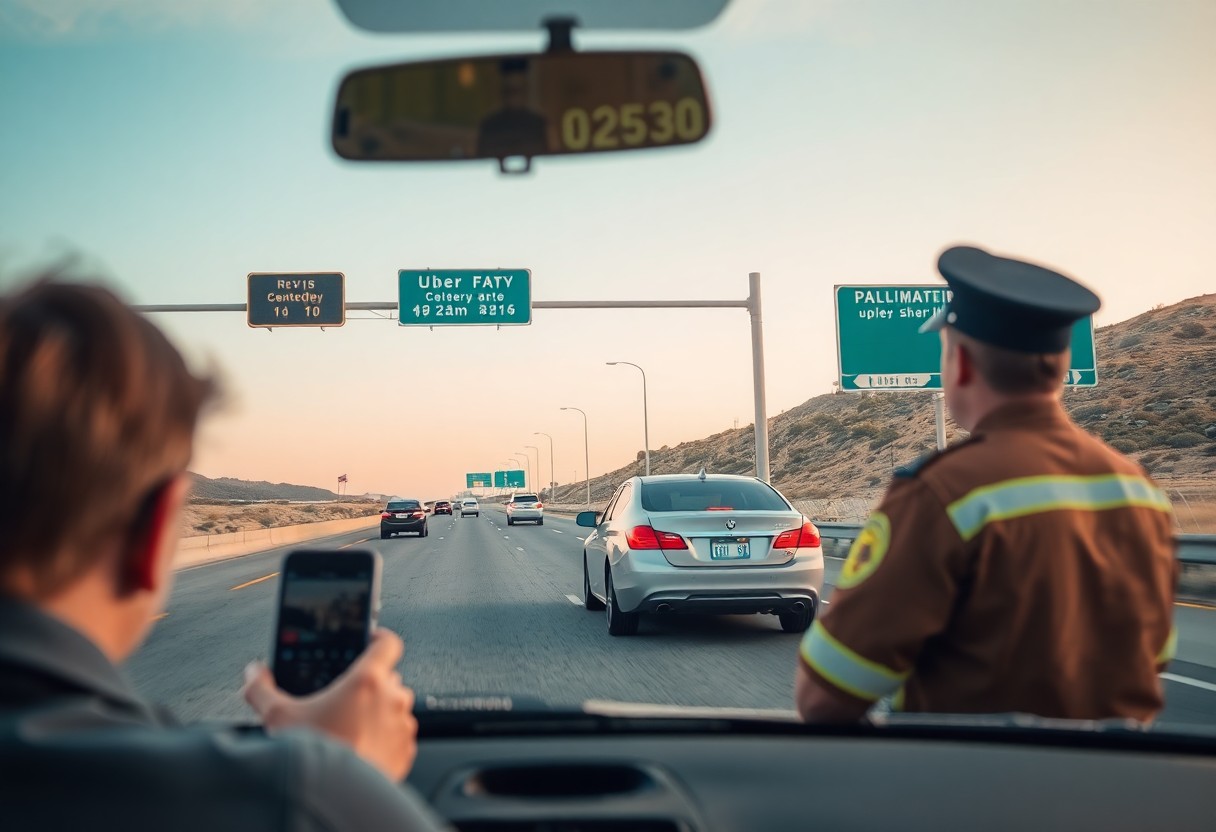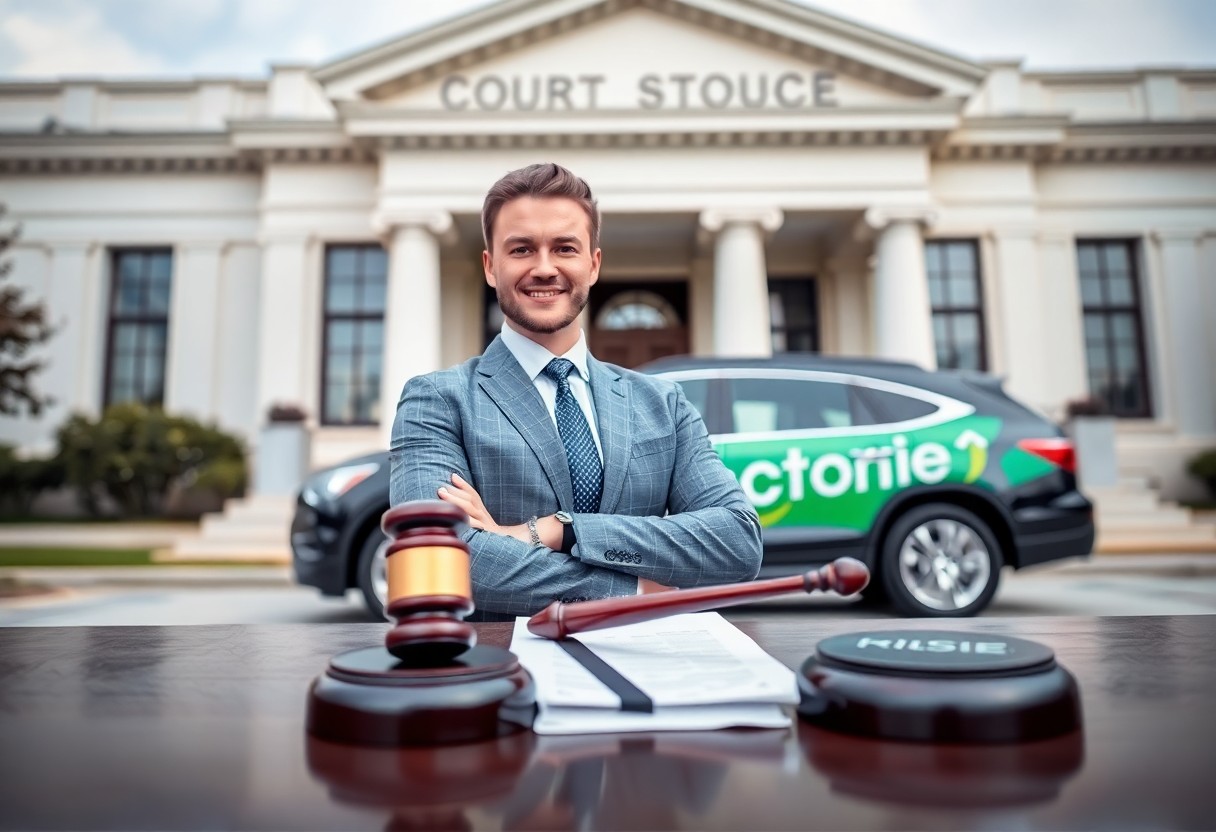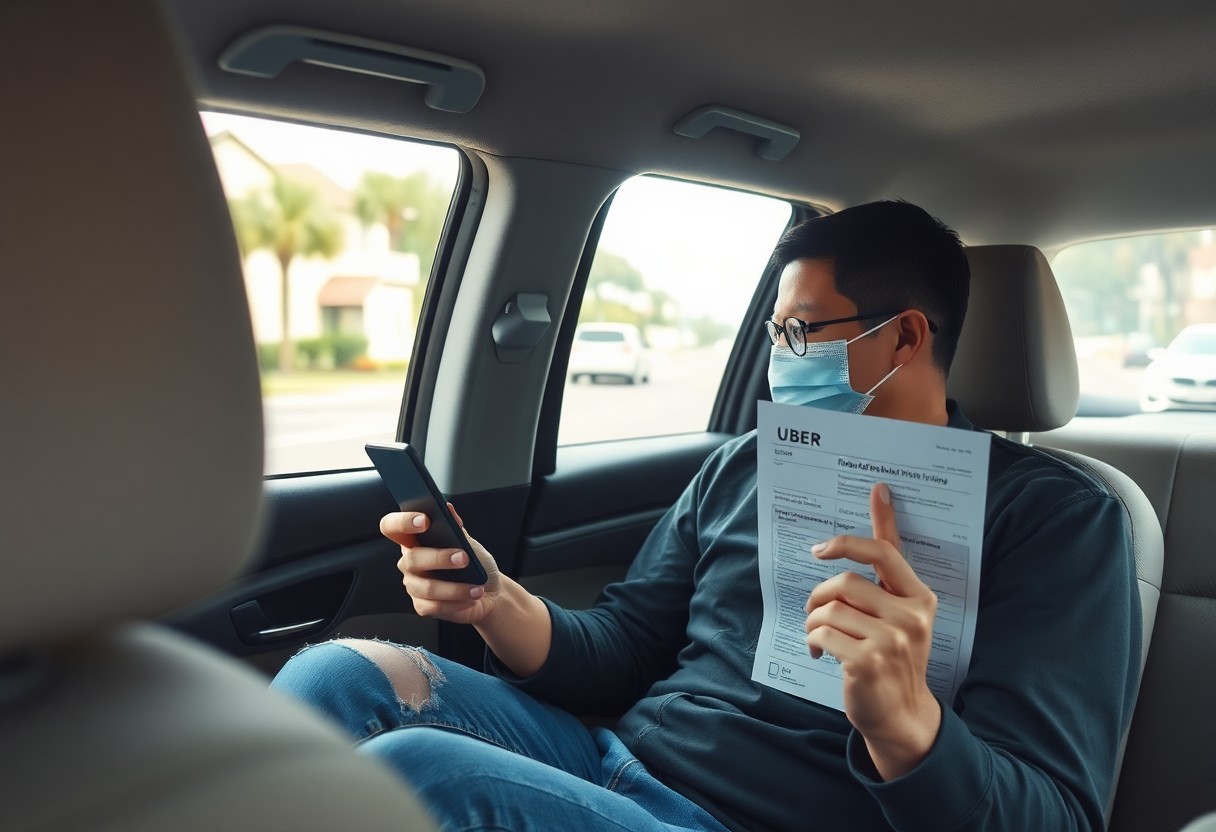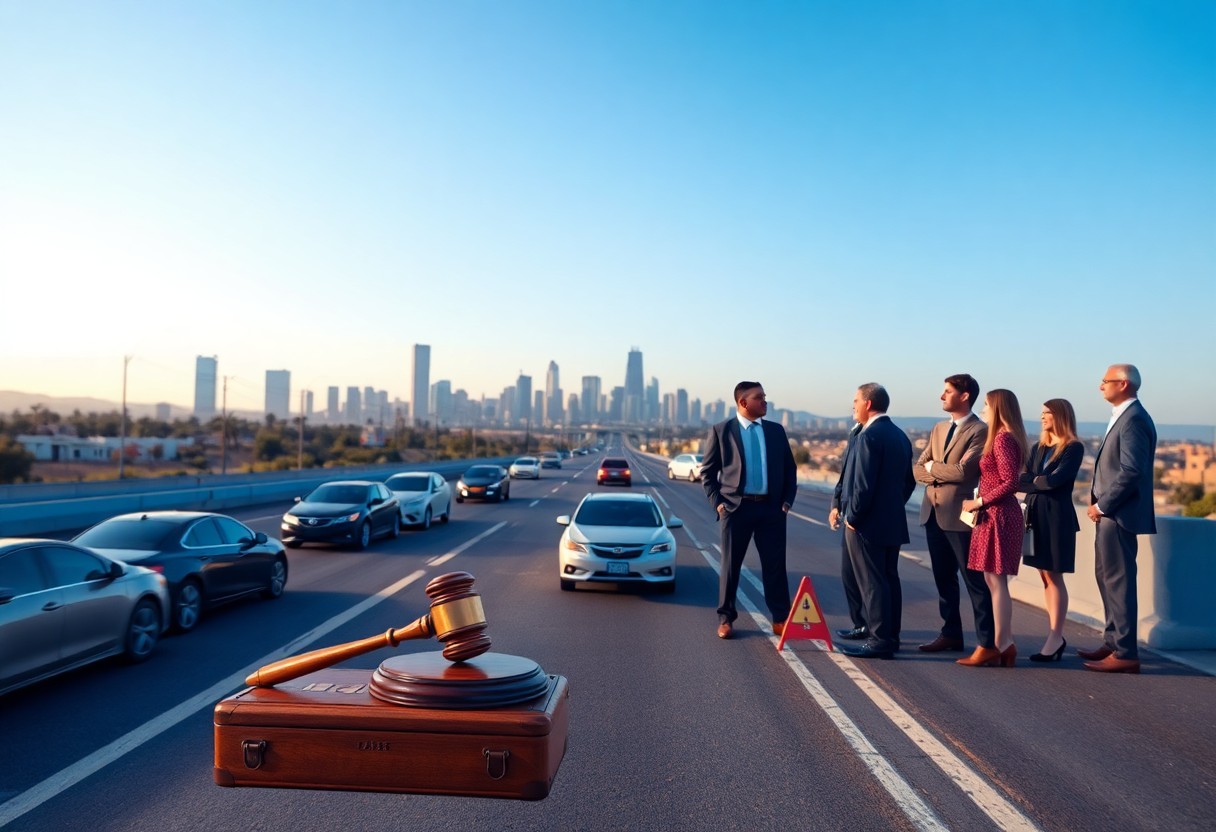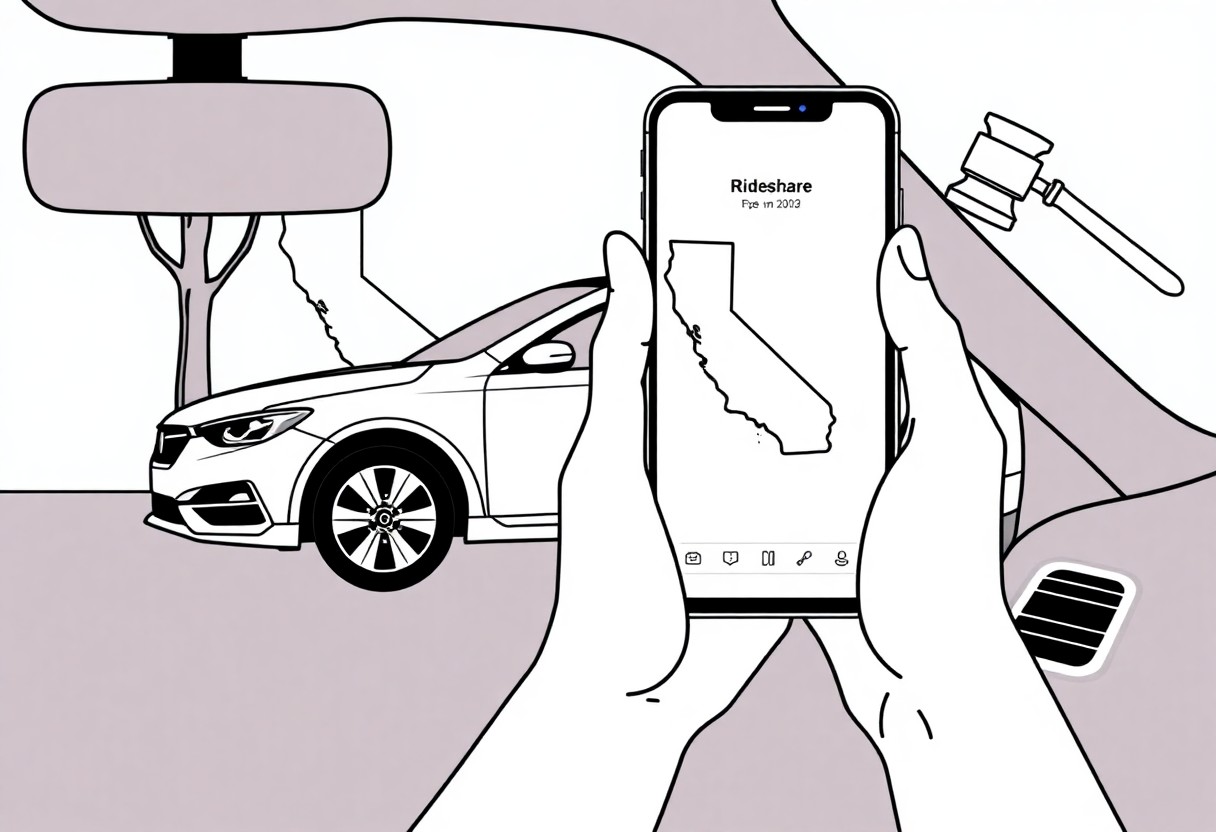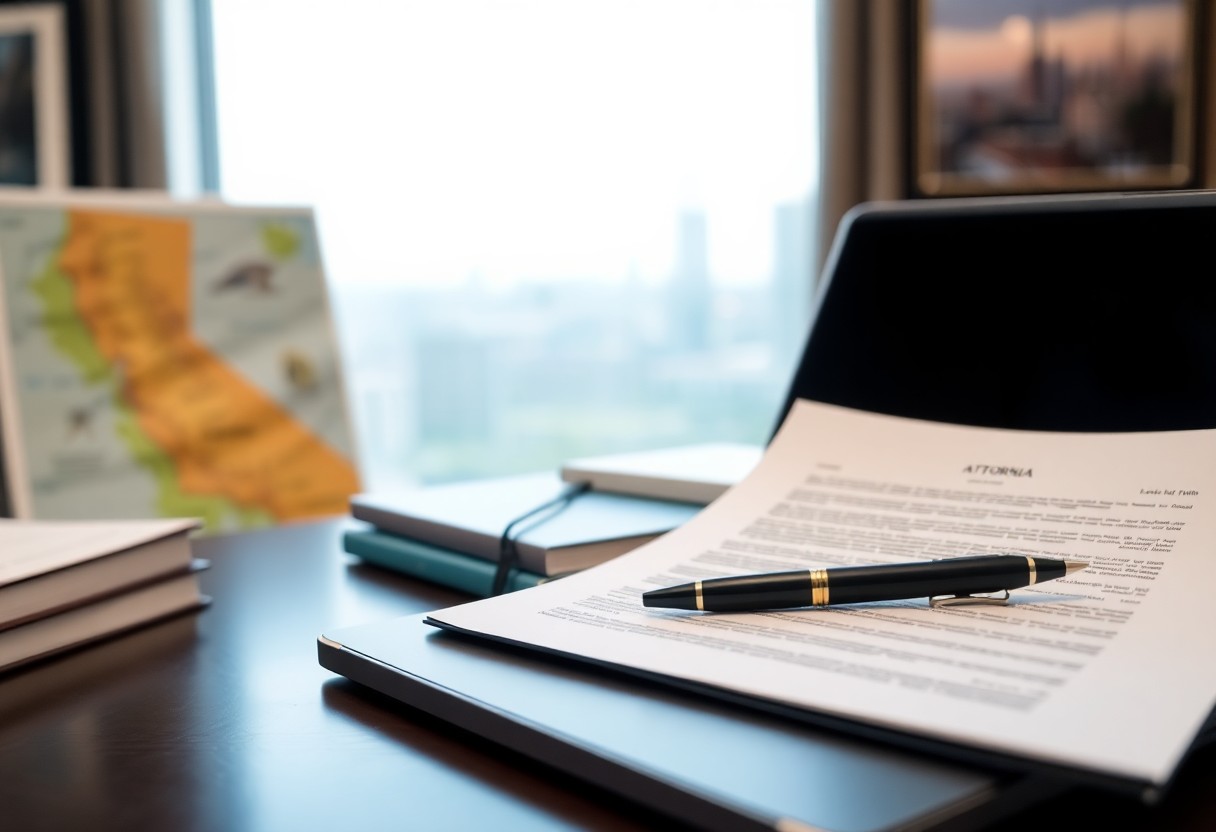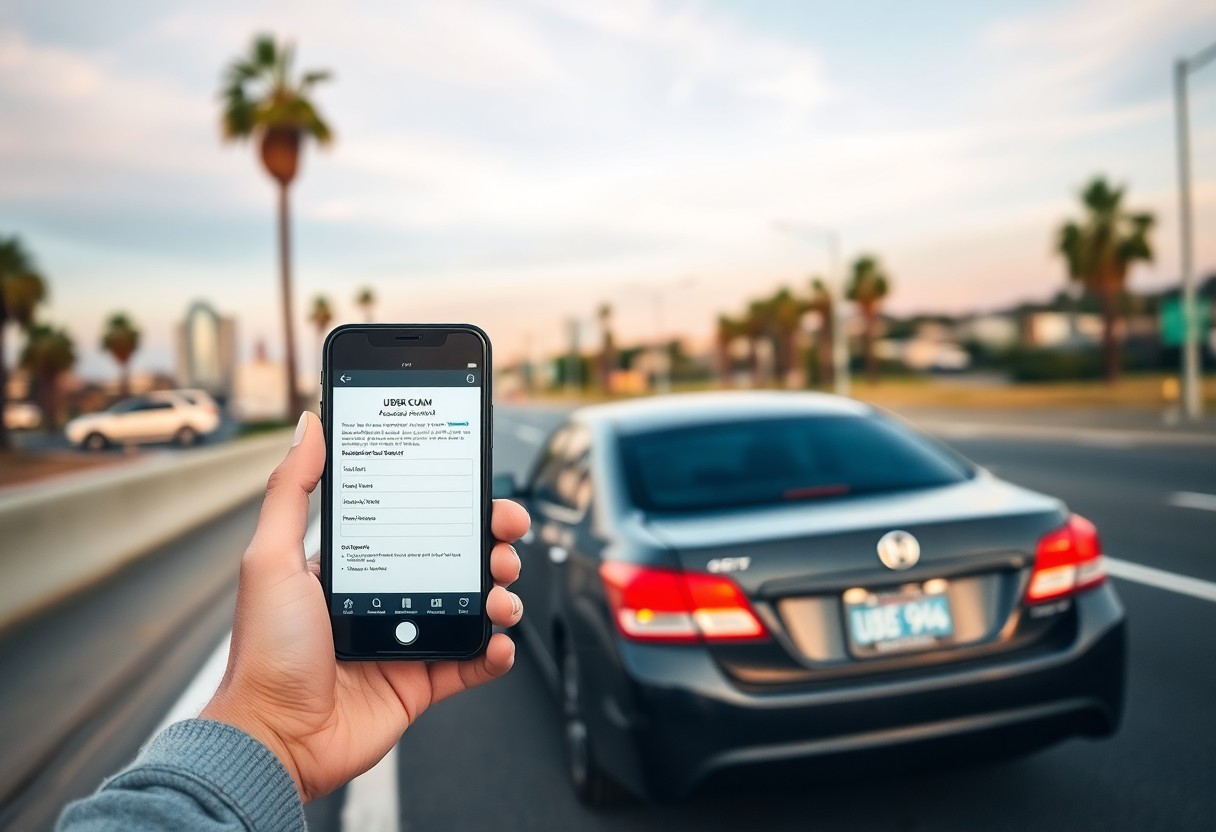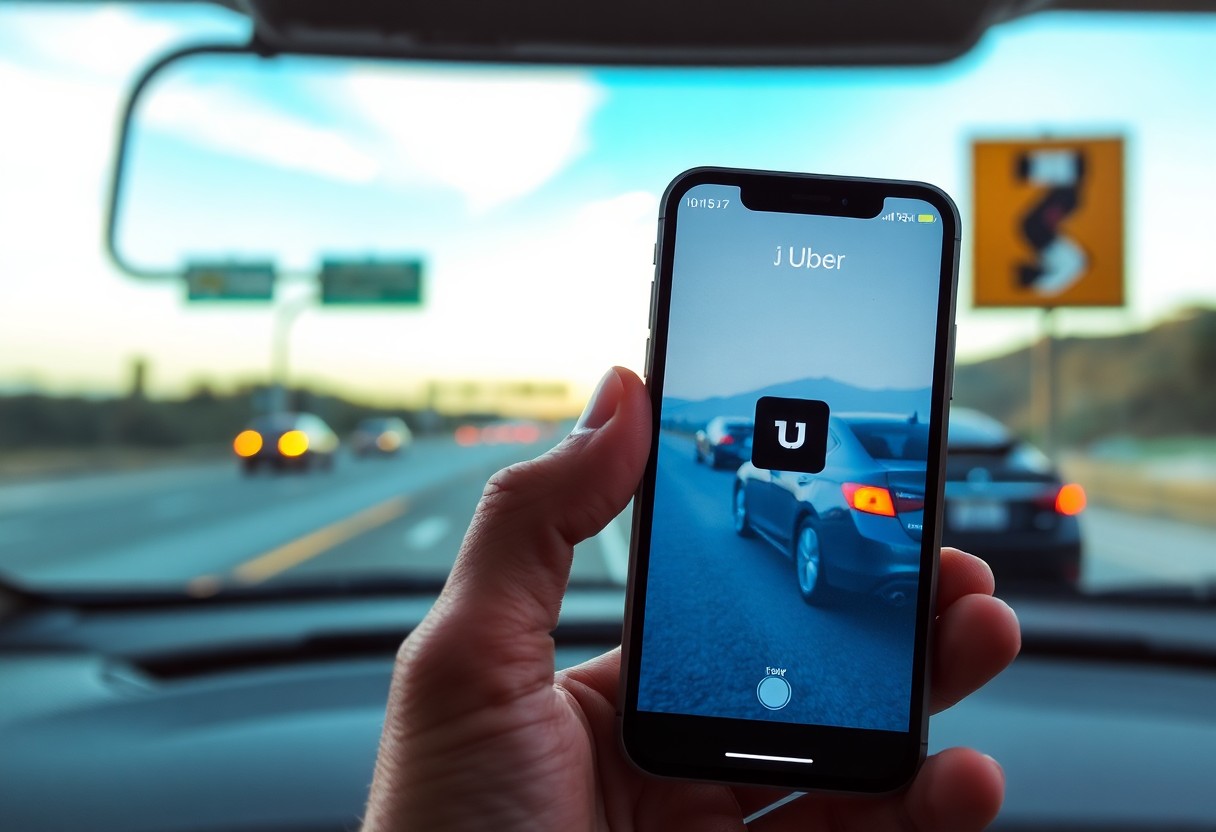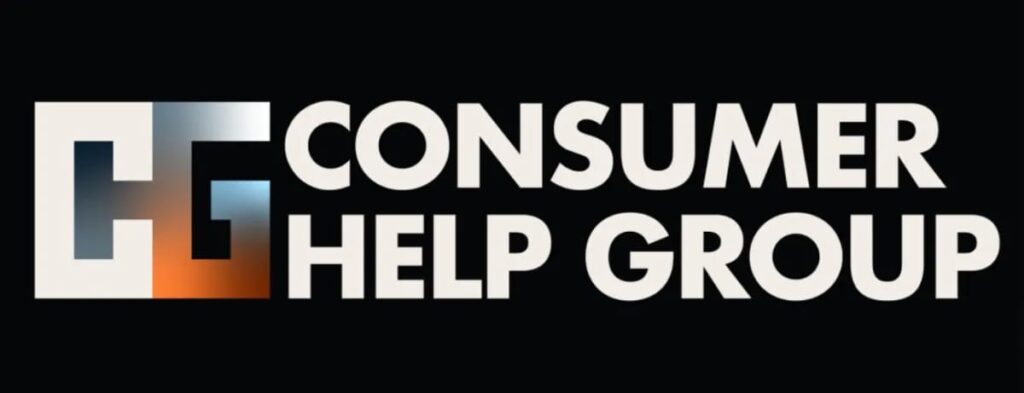Over the past few years, rideshare services like Uber have become an integral part of urban transportation, but accidents can still happen. If you find yourself involved in a California Uber accident, you may need to establish who is at fault to ensure proper compensation for your injuries or damages. In this guide, you’ll learn crucial steps to gather evidence, interview witnesses, and navigate the claims process effectively, empowering you to protect your rights and secure the best possible outcome.
Key Takeaways:
- Gather Evidence: Collect all relevant information such as eyewitness statements, photos of the accident scene, and police reports to support your claim.
- Identify Liability: Determine who was at fault by considering factors like driver behavior, vehicle maintenance, and adherence to traffic laws.
- Seek Legal Assistance: Consult with a personal injury attorney who specializes in rideshare accidents to navigate the complexities of liability and insurance claims.
Understanding Fault in California Uber Accidents
Before exploring into the intricacies of proving fault in a California Uber accident, it is important to establish what fault actually means in this context. Fault refers to the legal responsibility for an accident and can significantly influence the outcome of any claims you may file. As far as rideshare incidents, determining fault can be complicated due to the involvement of multiple parties, such as the Uber driver, other drivers, and even pedestrians. This complexity necessitates a thorough understanding of the specific circumstances surrounding your accident.
Definition of Fault
With regard to California Uber accidents, fault is determined based on the concept of negligence. Negligence occurs when a party fails to uphold a standard of care that a reasonable person would maintain, leading to injury or damage. In rideshare cases, this can involve evaluating whether the Uber driver was distracted, operating the vehicle safely, or complying with traffic laws at the time of the incident. Each of these factors plays a vital role in establishing who bears responsibility for the accident.
Importance of Proving Fault
An important aspect of recovering damages after an Uber accident is proving fault. The severity of your injuries and the associated medical costs can hinge significantly on the determination of who is responsible for the incident. If you can clearly establish that the other party was at fault, you may be in a better position to negotiate a settlement that adequately covers your medical bills, lost wages, and other damages.
Fault is not merely a legal concept; it has real-life implications for your financial recovery and overall well-being. By establishing liability, you improve your chances of receiving compensation for your injuries. Failing to prove fault can lead to substantial financial losses, including costs that may arise from medical expenses and the inability to work. Therefore, understanding how to effectively demonstrate fault in your case is paramount.
Essential Steps to Prove Fault
Gather Evidence
Evidence will play a pivotal role in establishing fault in your California Uber accident. Start by collecting photographs of the accident scene, including damage to vehicles, traffic signs, and road conditions. Additionally, gather any available video footage from nearby surveillance cameras, which could provide valuable insights into the events leading up to the accident. It’s imperative to gather any witness statements as well. These accounts can help corroborate your version of events and substantiate your claim.
Furthermore, medical records can also serve as evidence of the injuries you sustained in the accident. Make sure to keep all relevant documents organized, as this information will not only substantiate your claim but also play a key role if your case goes to trial. Additionally, Uber-related documentation, such as ride details and driver information, should be collected to establish the specific circumstances of your accident.
Document the Accident Scene
Documenting the accident scene is imperative in proving fault. Ensure you take thorough photographs of all vehicles involved, capturing the damage from multiple angles. Including images of your surroundings, such as road signs and signals, will help illustrate the context and any contributing factors to the accident. If applicable, also document the weather conditions, as they can impact driving visibility and safety.
Fault assessment often relies on details collected from the scene. Additionally, you might want to engage a professional accident reconstruction expert to analyze the scene and provide testimony about the events. Their expertise can offer a significant advantage in demonstrating liability, especially if deciphering complex factors is necessary.
Obtain Police Reports
With the involvement of law enforcement, a police report will document critical details of the accident that are imperative to establishing fault. When talking to the police, provide them with your account of the incident, and ensure to get the report number and the officer’s contact information for follow-up. The report typically includes statements from all involved parties, accident specifics, and, when relevant, citations given for traffic violations.
Obtaining the police report can provide additional legitimacy to your claim. Having an official document detailing the circumstances of the accident strengthens your position when negotiating with insurance companies or in legal proceedings. Be sure to obtain the report promptly, as there may be deadlines for filing claims associated with your accident.
Key Factors Influencing Fault
To determine fault in a California Uber accident, it is important to consider a variety of factors that impact the situation. Understanding these elements can provide clarity on liability and help you navigate the complexities of such incidents. The key factors influencing fault can include:
- Driver Behavior
- Vehicle Maintenance
- Road Conditions
The integration of these factors will provide a broader context for establishing fault in your case.
Driver Behavior
Fault in an accident can often be attributed to the driver’s behavior, including their actions leading up to the incident. Factors such as distraction, speeding, or driving under the influence can significantly impact the degree of liability. If the Uber driver was engaged in risky behavior, such as texting or making reckless lane changes, this may constitute negligence and influence the determination of fault. Your understanding of these behaviors can assist you in building a stronger case.
Vehicle Maintenance
Maintenance of the vehicle plays a fundamental role in ensuring safety on the road. If the Uber vehicle involved in your accident was not properly maintained, it could have led to critical failures that caused the accident. Regular checks on the brakes, tires, and other vital components are vital to preventing malfunctions that could lead to dangerous situations. In your case, looking into maintenance records may be necessary to establish if there was negligence related to upkeep.
Road Conditions
Maintenance of road conditions, including potholes, construction zones, or inadequate signage, can heavily influence fault determination. If poor road conditions contributed to the accident, this may shift some degree of liability away from the drivers involved. You would want to document any hazardous conditions that were present at the time of your accident as they may serve as significant evidence in your favor.
Influencing factors such as weather patterns can also exacerbate road conditions. Rain, fog, or ice can reduce visibility and increase stopping distances, creating unexpected dangers for drivers. Understanding how these elements interact with driving behavior and vehicle maintenance is vital in providing a comprehensive assessment of fault in your Uber accident scenario.
Tips for Working with Insurance Companies
All interactions with insurance companies can significantly impact your case. You need to approach these conversations with care and a clear strategy. Here are some tips to keep in mind:
- Document everything related to your California Uber accident.
- Know your rights as a passenger or driver in the Uber accident.
- Be cautious about what you say; avoid admitting fault or making statements that could be interpreted against you.
- Consult with an attorney to understand the implications of any agreement before signing.
Any misstep during this process could jeopardize your potential compensation, so staying informed and vigilant is vital.
Filing a Claim
For filing a claim, you’ll need to gather all necessary documentation to support your case. This includes police reports, medical records, and any correspondence with your insurance company. It’s also beneficial to collect evidence from the accident scene, including photos and witness statements. Once you’ve compiled this information, you can proceed to file your claim with the relevant insurance provider. Be sure to follow their specific processes and keep track of all communications related to your claim.
For Uber accidents, your claim will generally involve both the rideshare company’s insurance and the driver’s personal insurance policy. Make sure you identify which party is liable, as this will influence who you file a claim against. Understanding the differences between the coverage types is key to ensuring that you receive fair compensation for your injuries and damages.
Negotiating Settlements
Now, when it comes to negotiating settlements, being strategic is vital. Once you have an initial offer, you should carefully assess whether it adequately meets your needs based on medical bills, lost wages, and other damages. Don’t hesitate to counter the offer if you believe it falls short of covering your expenses and losses. Having a clear understanding of your case’s worth will empower you in these negotiations.
Tips for successful negotiations include staying organized and presenting strong evidence to back your claims for compensation. Highlight the most important aspects, like your medical expenses and lost earnings, to convince the insurance adjuster of your right to a higher settlement. It’s also vital to maintain a professional tone throughout the process, as a positive attitude can foster a more amiable negotiation atmosphere, possibly leading to a better outcome for you.
The Role of Witnesses and Expert Testimony
Now, establishing fault in a California Uber accident often requires you to gather various pieces of evidence, and witness statements play a key role in that process. Eyewitness accounts can provide you with critical insights into the circumstances surrounding the accident. Their perspectives on how the collision occurred, the behavior of the drivers involved, and conditions at the scene can significantly strengthen your case. You should aim to speak with anyone who saw the incident unfold and obtain their contact information for potential follow-up. If possible, document their statements in writing or, better yet, record their accounts to maintain accuracy and transparency.
Collecting Witness Statements
Collecting witness statements is vital for backing up your claim and providing an unbiased account of the incident. When approaching witnesses, you want to be courteous and explain why their testimony is important for your case. Explain that their impartial observations can aid in painting a clearer picture of the event. Be sure to ask open-ended questions that allow witnesses to share their experiences without leading them toward a particular narrative. Moreover, note any details they share, such as their relationship to the accident scene or their proximity to where the crash occurred.
Utilizing Expert Analysis
Assuming you have gathered all necessary witness statements, your next step may be to consider expert testimony, which can further solidify your case. Expert witnesses, such as accident reconstruction specialists or traffic safety analysts, can provide professional opinions that are based on evidence rather than emotion. This insight can help clarify complicated aspects of the accident and demonstrate how specific actions led to the collision, thereby establishing liability more effectively.
Another aspect to consider regarding expert analysis is that it often includes reviewing physical evidence, accident reports, and even video footage, if available. Expert witnesses can help interpret complex technical data, acting as a resource for both you and your legal team. Their objective perspectives and specialized knowledge can make your case more compelling, potentially leading to a more favorable outcome. Engaging these professionals may require an upfront investment, but their insights can be invaluable in establishing clear connections between the actions of the Uber driver and the resulting accident, thus influencing the final resolution of your claims.
Legal Processes for Pursuing Compensation
Keep in mind that navigating the legal processes for pursuing compensation after an Uber accident in California can be complex. It’s not just about determining fault; you also need to understand the legal framework surrounding rideshare accidents. California is unique in that it has laws specifically tailored to rideshare drivers, which can impact your claim for damages, including medical expenses, lost wages, and pain and suffering. Understand the importance of gathering evidence, like police reports and eyewitness accounts, as this information will play a vital role in establishing liability.
Understanding California’s Laws
An necessary step in the legal process is familiarizing yourself with California’s laws regarding rideshare services. In California, rideshare companies like Uber are liable for accidents that occur during the time drivers are active on the app, meaning that determining the status of the driver at the time of the accident is fundamental. If the driver was pick ing up a passenger or had a passenger in the car, Uber likely bears more responsibility. Understanding these specific regulations will help you tailor your approach as you seek compensation for your injuries and losses.
Filing a Lawsuit if Necessary
Compensation for your injuries might not be obtained through negotiations with the insurance company. If you’re unable to reach a satisfactory settlement, you may consider filing a lawsuit. California follows a statute of limitations for personal injury claims, typically giving you two years from the date of the accident to file. Being proactive in this phase is necessary, as time limits can impact your ability to pursue justice and compensation. Filing a lawsuit means you must put forth a strong legal argument supported by factual evidence regarding the accident.
This process can be daunting, and navigating the legal system without the proper knowledge or support may lead you to overlook important aspects of your claim. It’s highly recommended to consult with a qualified attorney who specializes in rideshare accident claims. They can help you evaluate whether filing a lawsuit is in your best interest and assist in strengthening your case. Establishing clear liability is necessary, and an attorney can leverage their expertise to ensure that your rights are protected as you seek to recover the compensation you deserve.
Final Words
Ultimately, establishing fault in a California Uber accident requires a systematic approach to gathering evidence and understanding the legal landscape surrounding rideshare services. You should start by compiling all related documentation, including police reports, photographs, and witness statements, to create a comprehensive account of the incident. It’s also important to seek medical attention not only for your health but to document injuries that may arise from the accident. By keeping detailed records and understanding your rights, you position yourself to build a strong case to demonstrate fault.
As you navigate through this process, consulting with a legal professional experienced in rideshare accidents can greatly enhance your chances of a favorable outcome. They can guide you through the complexities of California’s laws and help you understand how liability is established in these unique situations. By thoroughly following these steps and leveraging legal expertise, you can effectively advocate for yourself and work toward receiving the compensation you deserve for your accident claim.



